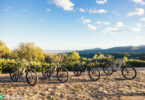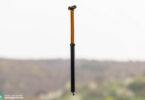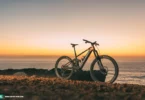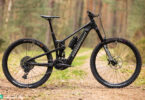Ready for a better future? What Baywatch, the new Porsche Taycan Cross Turismo and surfers can teach the bike industry and the riding community
The bike industry and the community are evolving rapidly, asking for a new approach and identity shift as well as laying fertile ground for growth and further development. Bring it on, we say. As E-MOUNTAINBIKE Magazine, we’ve developed a vision for facing the opportunities and challenges of the future head-on. Are you ready for the ride?
A new zeitgeist and the budding eMTB generation
It’s pretty mindblowing how much can change in a year. Not just in a technological sense but also in society. When we presented the E-MOUNTAINBIKE Theory of Evolution at the start of 2020, in which we mulled over untapped potential and the needs of the market and target groups, it was met with a mix of enthusiasm, a willingness to engage in dialogue, and downright rejection. The theory questioned the status quo and developments that were taking place, ones that had been shaped by conventional thought and informed by decades of experience, but ultimately, ones that fell short of what eMTBers really need. Much like Charles Darwin, we suggested that it won’t be the strongest that drive the eMTB evolution but, instead, the ones most capable of adapting. Which brand best understands the new generation of riders? Which brand can tailor its offerings to the zeitgeist and meet the needs of the future? Who has the foresight to predict trends rather than chase after them? Who can solve genuine problems that riders face? Throughout human evolution, it has never been about your current state but where you wanted to go. And it is precisely this mindset that the winners of tomorrow will need to adopt.
The purest form of madness is to leave everything as it is and still hope that something will change.
A quote often ascribed to Einstein but regardless of who said it, there’s a whole lot of truth in it. The bike industry has traditionally been guilty of being stuck in its ways, holding onto outdated convictions about who knows, rides, or wants certain things. The same mindset still plagues the industry today but this mentality of clinging onto the past to preserve the present is a one-way road to losing out in the future. Our E-MOUNTAINBIKE Theory of Evolution is a wake-up call for the bike industry and recognition of some pioneering work by a few brands.

The current zeitgeist is to emancipate eMTBs from the industry’s stubborn convictions, with a move to understand the undervalued potential of the new eMTB generation and embrace the massively diverse range of applications rather than position bikes within inflexible categories. In short: it’s about the future of eMTBing.
There are no longer definitive categories. The trend is towards all-rounders that can be used every day, where image, lifestyle and sport intersect.
Corona has sped up what was already in motion, serving as a catalyst for innumerable changes. This current Covid-fuelled bicycle boom has turned the sport into one of the most popular pastimes for all classes in society, opening it up to a new audience, new needs, and this new zeitgeist.
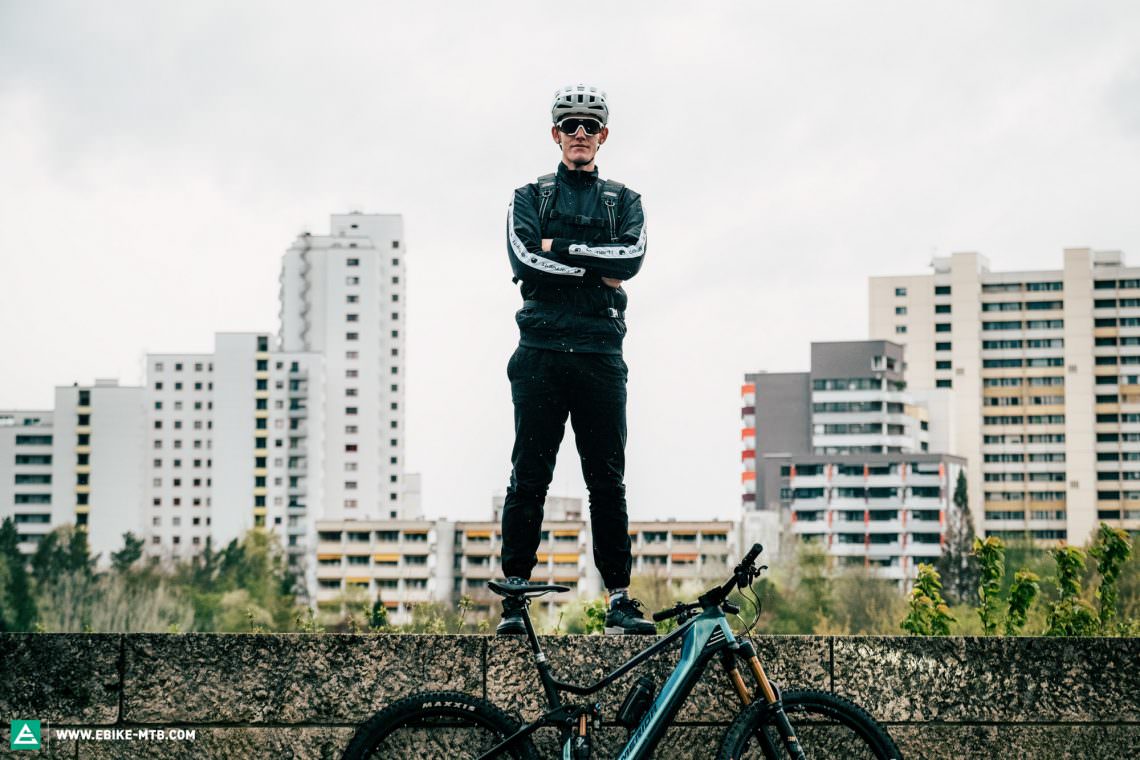
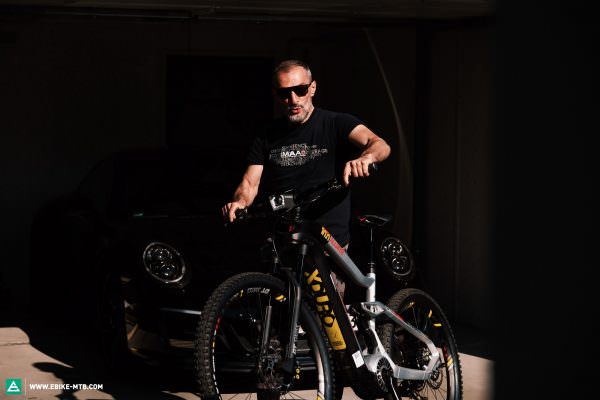
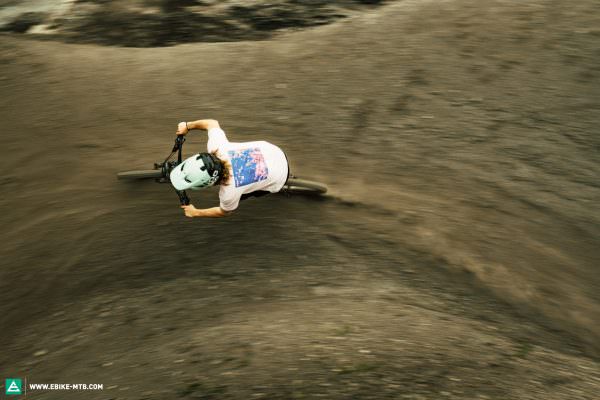
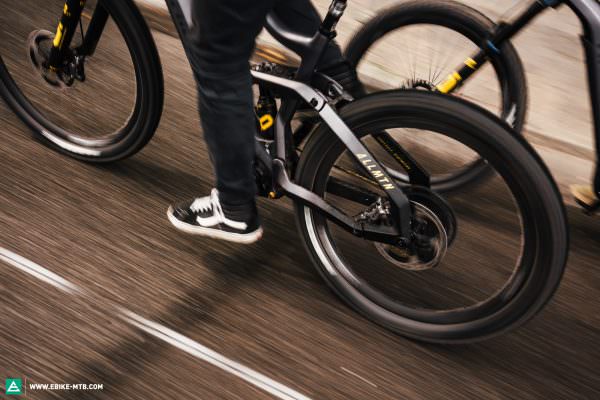
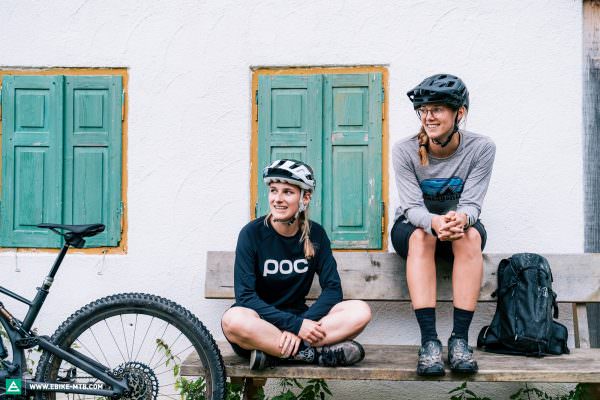


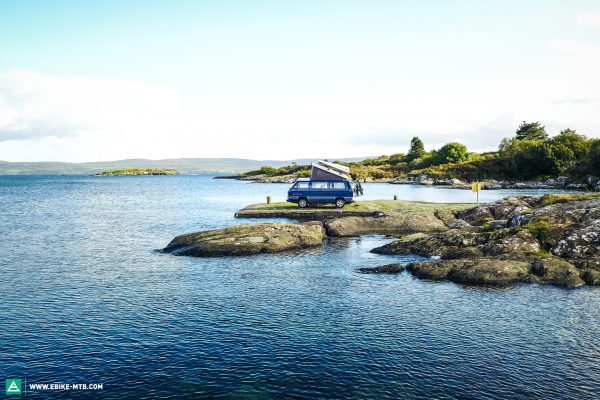
As user groups diversify, it’s interesting to see how this is creating a demand for more generalised products as opposed to more niche ones. There are three clear reasons for this:
- Bikes are rarely used to their full potential. It’s like with cars: unless you’re as demanding as Ken Block, you’re unlikely to push a racing car to its limits.
- An individual, or even a household, will use their eMTB for myriad purposes: from commuting and cruising for errands or an ice cream, right through to long-distance bike touring or epic Alpine rides. But no matter who’s riding, or where it’s being ridden, the bike represents a lifestyle choice.
- Technology now allows brands to realise more versatile products!
At the heart of these trends, it’s about all-rounders, something that can do whatever you ask of it whenever asked, uniting lifestyle, sport and image. You see the same tendency with cars: electric cars like the new Porsche Taycan Cross Turismo want to (and can) align juxtaposing elements within one single product: a fast sports car, 4×4 adventurer, comfortable tourer, purposeful family car all in one. Striking the balance of brand, image, performance, lifestyle and versatility is more important than ever – at least for the masses. Air-cooled 911 purists could see the Taycan Cross Turismo as half-baked but you hear the same complaint about other bestsellers including the Cayenne, Macan or even when features like a GPS or other mod-cons are added to a 911. What’s easy to overlook is that without bestsellers and additional features that appeal to a broad section of the population, purist motorsport aficionados would barely be able to keep afloat. Think about it: mainstream products give a brand the financial clout to entertain their core scene. Think about how many people would be left disappointed if their favourite brand didn’t have any sort of fitting product in their catalogue. For a sense of how this is playing out in the bike world, look at how companies like Riese & Müller have approached this, adopting a whole new mindset on their way to developing future-forward products for new audiences. As a rule, people aren’t looking for a product – they want a solution to their problem.

By entering the market with an integrated bike rack, the new Taycan is testament to the elevated status of bikes in society. Seen in this context, the bike industry needs to think big and step away from long-held assumptions. Classic bike categories are becoming redundant and even specialist bikes are suffering the same fate as they’re pushed further into their niche. Resilience, adaptability, and variability are part of the zeitgeist of this new eMTB generation. Forget the niches or the extremes, we want the middle ground where contradictions meet, where you can find the best all-rounder. We’re far beyond the stage of simply changing the sport of cycling with eMTBs. We want to reshape the landscape of mobility and recreation – basically, society as a whole. The pressing questions. How? And to what end?
What do we want our future to look like?
In the world of eMTBing, the “joy shared is joy doubled” mantra chimes true, which is why it’s so important to us at E-MOUNTAINBIKE Magazine that as many people as possible have access to this magic, reassured that their needs are being recognised and aware that they have the freedom to partake in the sport however they like.
The shift in the increasingly diverse needs of eMTBers is reflected in letters from readers, the readership of our articles dealing with such “new” topics, as well as responses to our annual E-MOUNTAINBIKE reader’s survey. Surveying more than 13,500 riders, it is the biggest and most representative study within the world of eMTBs, giving unfiltered insight into the market. By relaying your thoughts and worries, your feedback helps determine our editorial direction by confirming what topics to tackle in order to stay relevant with reviews and stories.

But in such a drastically evolving landscape, more needs to be done. It needs a vision. A pioneering roadmap towards something new that’s capable of incorporating society’s shift at the same time. The stereotypical elderly, white man on an eMTB is no longer alone. From dawn to dusk, rural to urban, eMTBs are a feature of our society – regardless of gender, age, class, or ethnicity. This shift is why we’re seeing off-road step-through eMTBs and kids’ eMTBs gain prevalence. But the shift goes further: take Stuttgart, the birthplace of the automotive industry, where eMTBs are being picked over cars as a status symbol, representing a new urban subculture that’s contesting branded streetwear, sneakers and iPhones. Once just a piece of sports equipment, eMTBs are fast becoming sports equipment with a message that’s capable of shaping society and future transport policies, an alternative mode of transport-cum-status symbol of a (sub)urban culture.

There is no THE best any longer
We’ve all met people in our lives who give unsolicited opinions and judgements of something they’ve never tried, pitying a purchase you’ve made, or belittling an experience without having their own experience of it. Nowadays, too many people confuse fact with opinion and while society thrives on both, the concept of something being right for one person doesn’t mean it’ll suit us all. We’re individuals with our own unique sets of values, needs and wants. The only fair judge of anything you do, pick, or purchase, is yourself.
The concept of the “best” is dying. In a complex world like this one, best is only valid in a specific context, answering “For who?” or “For what?”. This is why we’re incorporating more and more purpose-specific recommendations into our group tests, a nod to the breadth of what users demand. When we look for the best, it’s for an all-rounder, the one that is best at doing most things. In our ebike motor group test, we don’t even select a winner because a motor is only as good as the bike it’s on. As much as we all want to be fed straightforward truths, the reality is a whole lot more complex. What this means: a differentiated view helps to truly orientate the consumer.

Our mantra: The right tool for the job
Ever brought a knife to a shootout? Stepped out of a burly SUV at a climate protest? Some things just don’t go together as the rapidly evolving eMTB world is discovering: the community, technology, our environment and the zeitgeist might clash from time to time, but that sparks new challenges and, above all, big opportunities.
The two most important subjects of E-MOUNTAINBIKE Magazine are giving real-world buying advice, and shaping and developing the eMTB market. For us, it’s not only about expertise and know-how, it’s about understanding, and making sure that understanding never gets old. As the market shifts, it needs to be revisited. Change is a continuous, reciprocal process. When the market changes, so too must the product. Should the product then change, the market must respond. In the constant back-and-forth challenges arise, but so do opportunities if you’re willing to look for them.
A cross between a mountain and city bike, E-trekking bikes are a prime example of where the industry has been complacent. Inside our E-MOUNTAINBIKE issue #028, you’ll find a group test predicting the death of E-trekkers. And it’s not down to a lack of demand for bike touring and trips! Far from it. Other bikes are simply able to deliver a much more versatile package to satisfy the needs of tourers. The electrification of such bikes has fallen short as the industry clings onto the tried and tested. What’s really tragic here is that more than 35% of ebikes sold annually in Germany fit the bill of your classic touring ebike, so we’re seeing customers shell out hard-earned money on a category of bikes that are no match to other options on the market.
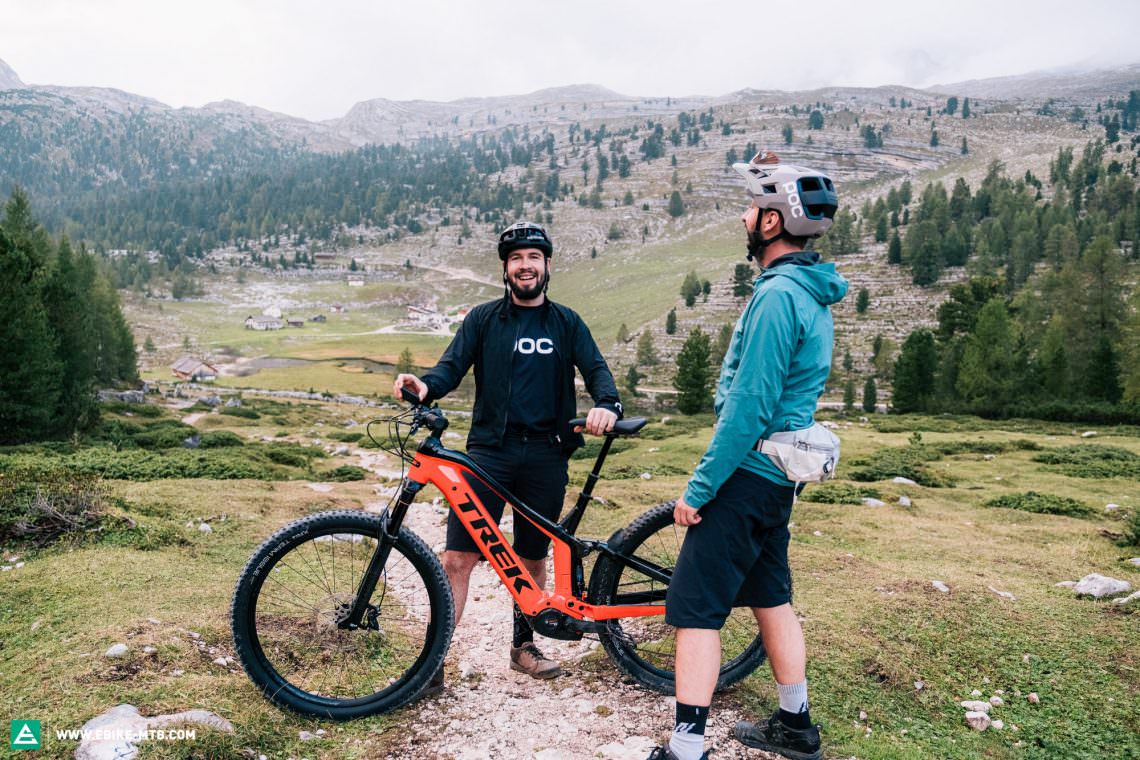
Technical specs and features are often mistaken for the actual benefit they are meant to provide. While we’re all for bike nerds getting their fill of data, every race driver knows that a sports car’s performance doesn’t depend on its horsepower but how it transfers it to the road. Is a bike always just a bike or can it be a tool that lets you accomplish jobs and take you to a new dimension?
Imagine something that …
- …takes you to places that you’d never reach otherwise
- …allows you to discover your environment from a new perspective
- …whisks you away from the daily grind and into nature
- …helps you to meet new people and form new friendships
- …raises your fitness and endurance to the next level
- …is fashionable and stylish
- …adds excitement and a sense of adventure to your post-work loops and weekend rides
- …introduces a more environmentally friendly commute and a sustainable touch to console your climate concerns
- …is a lot like meditation, calming your mind with every pedal stroke
- …challenges you to try new trails, learn new skills and push your limits
- …expands your technical understanding and fascinates you so much that some of you will become bona fide tech geeks
- …sparks a fire in you that adds dynamism to your life
- …democratises activities you do with friends and family, regardless of how different your fitness level might be
- …is damn, damn cool
An (e)MTB can pack all of this into one single product, fulfilling all of these wishes and meeting all of these demands.
You cannot teach a man anything, you can only help him find it within himself. – Galileo Galilei
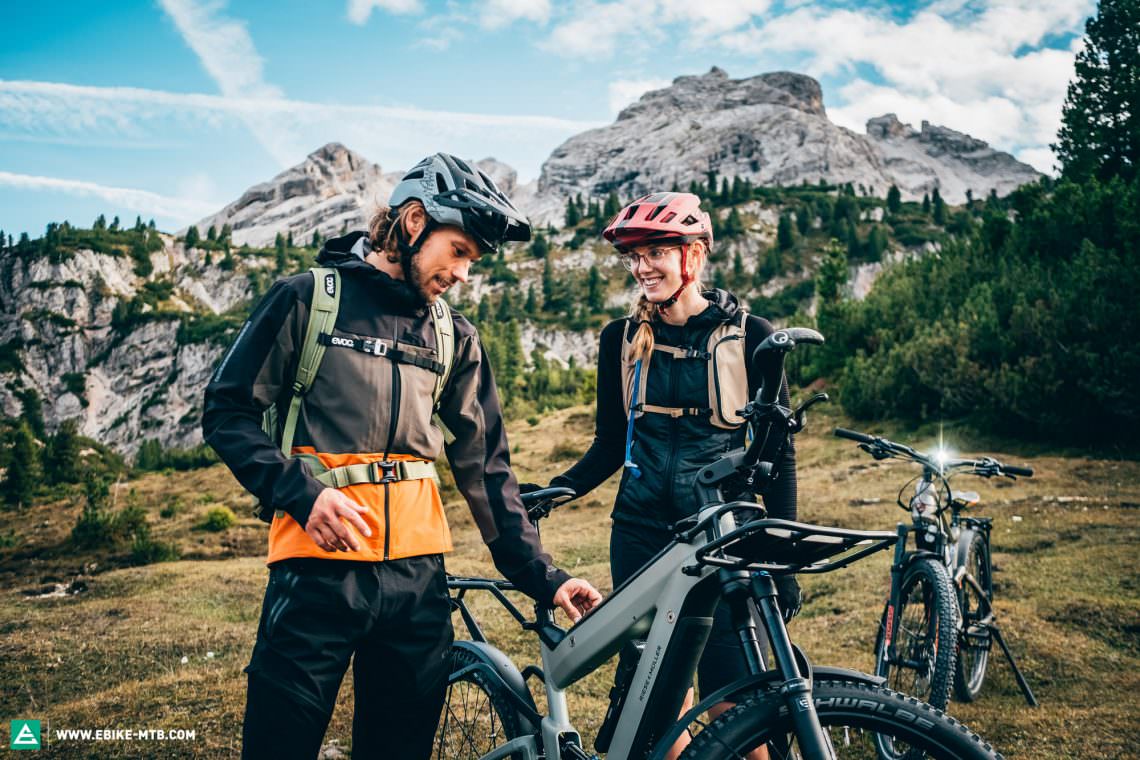
With our mantra “the right tool for the job” our editorial office has gone off-piste, shunning the traditional school of product categories and thinking with an open mind in terms of fundamental needs, experiences and pragmatic demands. Categories can’t be determined based on specs and stats – what counts is being fit for purpose and catering to the vastly differing needs out there. We all ride, use and enjoy our bikes in our own way. Our mission is to relay relevant information so that regardless of whether you’re a novice or an expert, you’re equipped to make a considered, autonomous purchasing decision.
There are several key questions that we’ve always focussed on. What do people need in the real world? What issues do they encounter? How can these be fixed? Are new challenges about to emerge? What’s the actual value offered by this bike? This approach is enough to break out of the mould, prevent yourself from getting stuck in tradition or swept away by data of secondary importance. Sure, stats may count on race day but not in the day-to-day.
With answers to these questions, you can work on technical solutions to the problem. Therefore, it’s no surprise that more and more solutions are emerging which are hard to slot into traditional categories for the simple reason that they are designed to solve a problem rather than create innovation for its own sake. In short: they represent the right tool for the job – something that’s capable of satisfying specific, individual needs. But while they satisfy that one demand with ease, they still have to demonstrate that their utility expands beyond more than just one single purpose.







Opportunities, challenges and developments within the industry and the community
From the subheading you’re probably expecting this chapter to focus on the obvious challenges that the industry will continue to encounter throughout 2021 and 2022 – rising prices, interrupted supply chains, delivery constraints and limited availability. Sure, these are pressing issues but we’ll only touch on them briefly here, having already investigated the topic in-depth online. Instead, we’re looking at long-term bike-related developments and challenges that will have a lasting effect on the industry and the community – things that will impact us as riders.

The (e)bike industry is thriving – the emergence of new brands, new players, and a new subsection of users is pumping in energy and prompting a whole lot of change. Many of these changes are long overdue, others have come hand in hand with the sector’s growth. The traits needed to make them stick? Understanding, patience and a new mindset. Riding a bike is no longer a niche activity. As of 2021, it has hit the mainstream, shaking the bike world up like never before. Once linear structures are now networked. Consolidations, new alliances, development strategies and working principles are just as important as the need for brands to re-think their service offerings. Here’s an overview of the most important topics:

Bike boom in a crisis?
Expect 2021 and 2022 to feature increased prices, limited availability and inconsistent quality. Bike brands are having to deal with the impact of coronavirus, enforced health measures taking their toll on production efficiency, a shortage of aluminium, delivery times that can amount to 600 days, as well as significantly increased transport costs and taxes. Some are facing cash flow problems, as assembly and delivery are held up by the absence of one or two parts, despite having otherwise full warehouses. Manufacturers need to be flexible, juggling a production schedule that won’t upset customers. The limited production capacities of the major manufacturers in Asia means that not only can demand barely be satisfied, but small brands are thrown under the bus – largely powerless and without the clout of the bigger players, they’re losing out on production slots. It’s going to hurt them. Add to that the reality of longer decision-making processes and endless online meetings in which there’s less and less time, space and energy to deal with long-term challenges and opportunities.
In times of growth when new stakeholders are entering the sport, it’s more important than ever to concentrate on brand building, market visibility and communication. Reel in the new riders, explain who you are, communicate your values to them. Studies done throughout the Covid crisis have found that the companies who invested in their communication despite upsets in the market have come out on top in terms of brand awareness. This applies to the bike industry too, even if new bikes are almost impossible to get hold of. Look after your community. Greet your new fans. Tell your stories and be inspiring.

A shift in the bike community – Forget surf-style assholery, it’s about respect and tolerance
Let’s not make the same mistakes as the surf scene. It’s one of the coolest sports in the world, but you enter the waves in a popular surf sport knowing you’ll be sharing the water with some first-rate idiots who fight for every wave that comes your way, show disdain for out-of-towners and rarely share a wave out of generosity. The way a surfer fights for their territory can be arrogant, intolerant and protectionist. Of course, it’s not the stuff you see in heroic surf films and sleek branding, but that doesn’t mean it’s not the case.
Until recently, cycling has catered mainly to aspirations of performance and “shredding the gnar” but this is changing rapidly as categories merge. Not only does your classic mountain biker go ride an eMTB, but so do riders of all genders and abilities. The target audience for ebikes knows no limits and spans every generation from kids to grandparents. We don’t want to see this topic rear its head again so we’ll take on the subject here: riding isn’t about where you come from, how you ride, or how you’re dressed. It’s about having fun, however you please. Everyone needs to feel like they’re part of something bigger: the bike community.
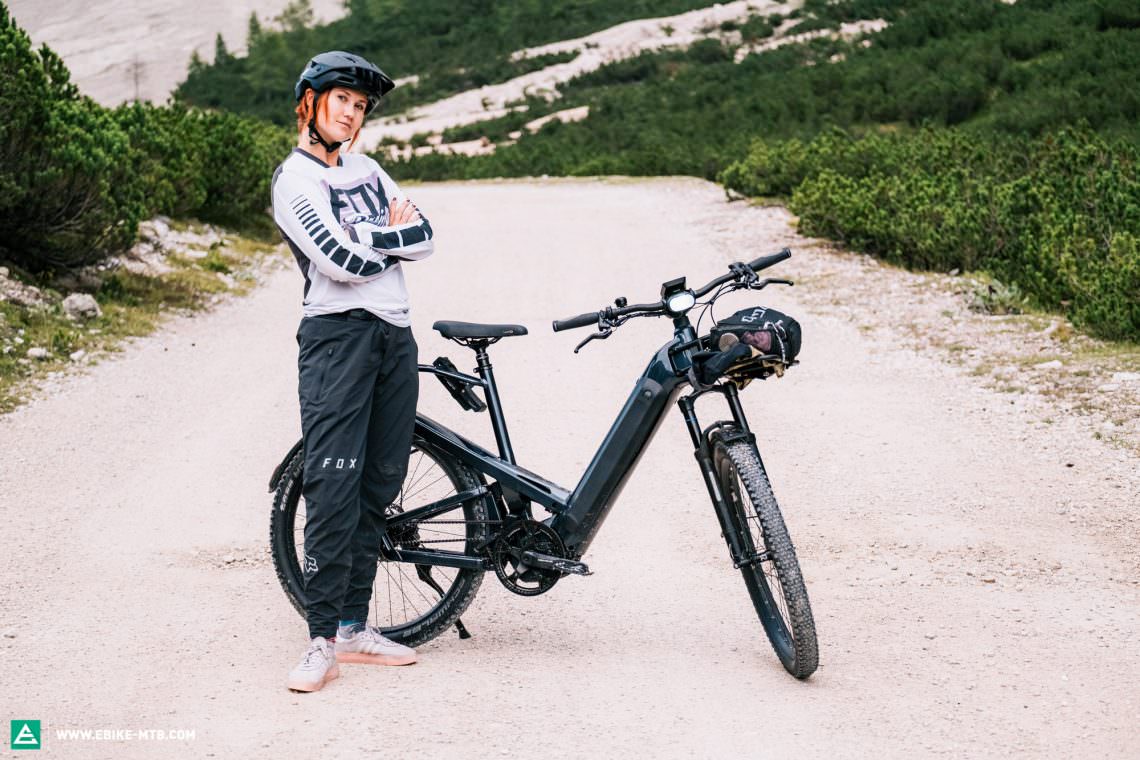
Diversity requires respect, tolerance, understanding and rules, which means beginners deserve a certain amount of help and guidance. That’s the job of the current bike community as much as it is the industry’s and media’s responsibility. Instead of getting wound up by novices, start a dialogue, exchange perspectives and foster understanding. Don’t harden the front, soften it. It isn’t about convincing people by preaching. That will only be met with more resistance. Of course, you’ll always end up meeting the odd individual resistant to any respectful discussion but unfortunately, an idiot is an idiot, whether they’re driving, riding, or walking.

Forests are a melting pot: wild animals, horse riders, hikers, cyclists, hunters and rangers. Any inconsiderate or reckless act is a crime out here. Reel in your ego and welcome diversity into the woods (correction: every part of your life) with a smile and respect. It won’t always be reciprocated, but trust us, it can make a huge difference. Riders don’t care what bike you’re riding, nor how fast or slow you’re going. No one has more or less right to be in a certain spot, provided you’re not on illegal trails (we can’t help you there). Pivot your attitude and see the amazingness of meeting new people while surfing the trails. Consider that these riders could become new buddies. It’s a reality that so many surfers are missing out on. Let’s not let riding suffer the same fate.
Our trails need you – And a lobby!
The maths is easy: more bikes sold = more riders on the trails. It’s going to impact the traffic on your singletracks, even if a lot of newer riders will predominantly stick to fire roads and gravel tracks. Your gnarliest, most in-the-know tech trails will probably still be reserved for you, but expect people to ride the more obvious ones and don’t try to claim ownership over terrain – it’ll lead to conflict. Talk to each other, be engaged, play an active part in maintaining your trails, help progress the bike community, or launch a trail building project. We’re seeing a wealth of new alliances and bike lobbyists, which will only help strengthen cycling’s stronghold in politics. Find out what’s happening in your local area. Support what exists, or even start your own initiative. All trail users should give back at some point to ensure that the trails have a future. Whether you start lobbying or just tending to the trails, it all helps.
Anyone riding the trails should stick to the rules so as not to upset other trail users or local residents. Having a respectful chat with rangers or hunters could throw up some insightful perspectives and result in everyone getting an even more positive experience in the woods.


Quench your thirst for adventure, done safely – Baywatch on the trails?
You (probably) wouldn’t be a mountain biker if you didn’t have a certain appetite for adventure. For most of us, a portion of adventure is a staple in every ride. But while certain rides and routes used to be the preserve of serious adrenaline junkies or intrepid explorers, the topic of safety needs to be revisited. Given the number of new riders and the way bikes are being developed in terms of capability and limit-pushing hyperbole, people are ending up in locations that they wouldn’t previously have reached on two wheels. Whether it’s a sign of the Dunning-Kruger effect or prompted by feats seen on YouTube, people risk putting not only themselves in danger but also the reputation of the sport, simply by overestimating their abilities or not researching routes in advance.
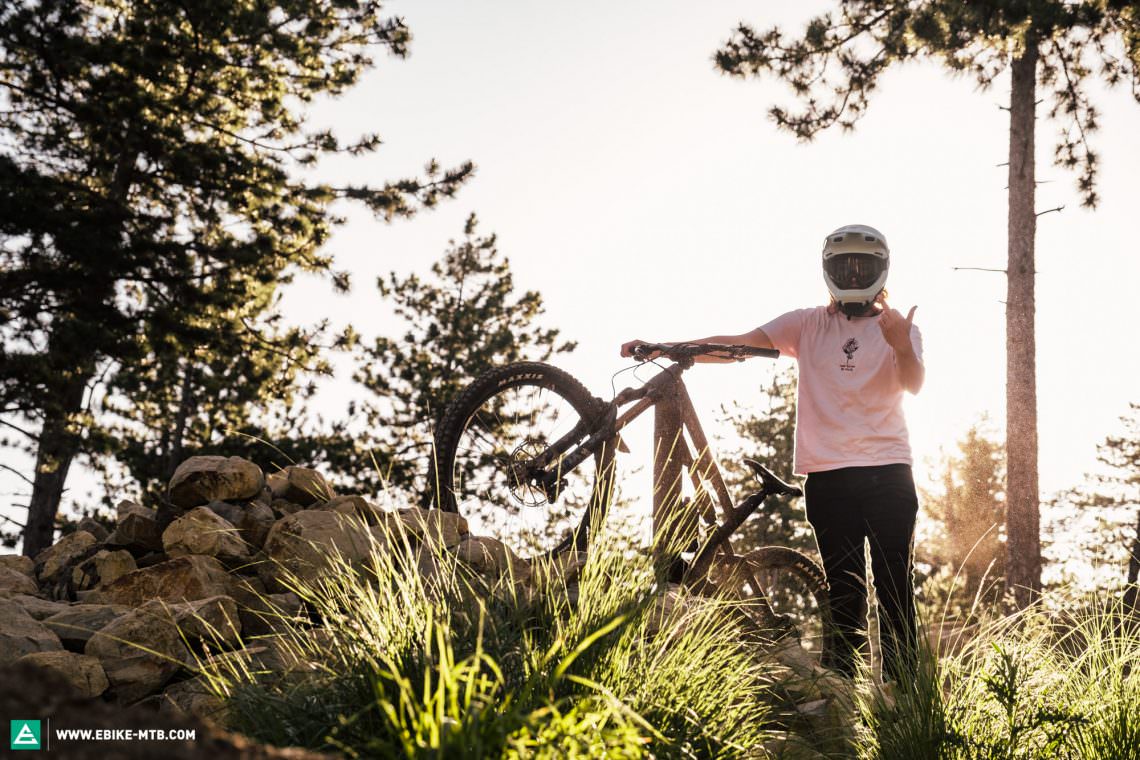
While most pre-millennials would have dreamed of heroic rescue missions by Pamela Anderson and David Hasselhoff, we can all agree it’s better not to end up in a situation where the emergency services are called. However, there’s an inherent risk to riding a bike, just like there is when driving a car. Living your life comes with risks and uncertainties. But there are things that can be done to make riding a safer pastime – the digitalisation and electrification of bikes, components and equipment is one way of enhancing our safety, both actively and passively. Progressive tourism regions, like the Maremma in Tuscany driven by the visionary hotelier Ernesto Hutmacher, are adopting measures that address this topic. They’re building an emergency and safety network, taking technological cues from the ski industry to utilize a combination of GPS tracking and human-staffed control centres.
The subject of safety was prominent at the Design & Innovation Award, seeing it take a pivotal role in the Trend Report 2021:
“Safety is also a focus of developing technology. Radar sensors like the Garmin Varia can provide ample warning about vehicles approaching from behind. Using a sensor attached to the valve, the Quarq TyreWiz can tell when tyre pressure falls to a critical level and lets you know. Alongside mechanical bike locks, stolen bikes can already be tracked with GPS devices and personal protective gear has also got smarter. In particular, wearables demonstrate the benefit they are capable of delivering. A jacket can also be a rear light. A sensor on your helmet or bars can automatically recognise crashes and let an emergency contact know. Rescue services are aided in their search by GPS location and passive reflectors and can even read medical information from NFC tags attached to clothing. All this combined will contribute to making the sport and riding in traffic even safer in the future.”
The sensation of safety can be elevated through technology. Take Strava Beacon, giving real-time information on your location to ease the concerns of friends, families or contacts when you’re out in the wild.
“Everyone can ride a bike.” is what you’re probably thinking but regardless of how well versed you are in staying upright on two wheels, accidents happen. Season after season, you see it with pros and it looks painful. For anyone riding off-road, there’s not only a certain amount of experience and skills you should have but also an understanding of trail etiquette and essential first aid. Carrying a compact first-aid kit is a fundamental step. Having a solid understanding of your own ability is another. Stay within your comfort zone and don’t take uncalculated risks when riding alone. Accidents happen when you least expect them. Let that dream of Pamela Anderson or David Hasselhoff coming to your rescue remain exactly that: a dream.

The temporary crisis and its opportunities – Look after the scene
Empty shelves, sold-out stores, long waits for repairs, inconsistent quality and a shortage of spare parts: doesn’t really sound like the best ingredients for a trouble-free season.

But that’s what we’re dealing with and while it is unlikely to change much throughout 2021 and 2022, is it a reason to hang our heads? No way! If necessity is the mother of invention, use this time to improve your local scene, get creative, help each other and show your initiative. Perhaps you’re sitting here, looking at the issues and realising that there’s a business opportunity? Others among you might be inspired to sow the seeds for a bike group, rent a shared workshop space, or aim bigger and open up a coworking space with tools, workshops, events, regular rides and more. What’s better than tightening bolts and adjusting spoke tensions alongside new friends, with a decent coffee or a beer in hand? Fact: you can never have too many bike clubs!

Corporations without a corporate mindset? Where’s the bike industry headed?
It’s at a crossroads. With more and more billion-dollar companies active in the industry, there’s the question of whether cycling is going to follow the much bigger footsteps of the car industry, or simply learn from what it has done without losing sight of its own qualities and strengths. Everyone’s predicting major growth but that entails big challenges in terms of organisational structures for manufacturers and retail, affecting every area from product development to company culture and customer services.
It is arguably more important to employ an innovative mindset rather than stick to tried and tested practices that are facing the most upheaval. When it comes to high quality and large-scale production, Japanese and German car manufacturers are second-to-none. For the bike industry, there’s no denying that further professionalization and scaling up, especially given the current massive demand, is critical.
The approach of the Accell Group, who produce models that are partly shared between the bike brands they own, can be seen as an important step for high-quality mass production. It ultimately results in a quicker return on investments, larger margins or lower prices, as well as all-important improved service and better access to spare parts. Longer product cycles and more agreement on standards would work in favour of the fast-moving industry, which is so used to being driven by trends. It’s incredibly tough for brands to justify the investment and service provisions for components that exclusively feature on individual models or ranges i.e. not adhering to widespread standards and therefore not widely compatible.
The situation is similar in the area of advancing digitalisation and electrification. Here too, it’d be savvy of manufacturers to create more uniform, universal solutions – integrated software and hardware concepts come with massive costs that very few motor manufacturers and basically no bike brands can afford. Specialized, who have their own digital ecosystem, are the exception here. By offering additional digital services, brands like Riese & Müller and the urban brand Stromer are able to offer significant added value and elevate the user experience beyond just riding a bike. Connectivity know-how, like Croatian brand Greyp offer to their OEM clients, will be in ever greater demand in the future.

While the electrification and digitalisation of bikes bring a host of advantages, it is not short of drawbacks, as the Technology Trend Report from the Design & Innovation Award 2021 highlights:
“Products are getting smarter and more versatile but also more complex. That’s something that has to be scrutinised critically amongst the growing tide of claimed innovations. In the attempt to offer customers more services, smart tools, electrified components and to simplify life, developers and product managers sometimes create the exact opposite effect. Technology for technology’s sake doesn’t make much sense. A further challenge faced by digitalisation is, quite literally, not being able to see the forest for the trees, or rather, the gadgets. It’s the responsibility of the bike sector to integrate new developments in a way so that they offer value to bikers without impacting on the direct and natural feeling of riding. If you’re constantly looking at a display, or pressing buttons, or storing lap times, it calls into question what this has to do with the puristic potential of our favourite hobby. Escapes should stay escapes – it has to remain possible to get away from everyday life on your bike. It’s good if your smartphone and other technology can stay at home sometimes.“

Don’t panic, it’s gonna be alright!
Considering all these changes and developments, it’d be easy to feel overwhelmed, but don’t worry. You get winners and losers in any period of change and this time it seems like a large part of the bike industry will be on the winning side. What’s needed in this context, other than a bit of restrained anticipation, is to keep a cool head and stay firmly grounded. If you let yourself take off, you won’t just lose your balance but also the grounding for realising your vision and plans.
What else is needed? Put your expectations in the right context. There’s a tendency in the bike industry to align yourself with Amazon or the world of electronics, where instant availability is a big topic. Instead, pivot. Take a look at the watch industry or automobiles, where waiting times last months, if not years, until you get the model you want. Take it easy, indulge in the anticipation – isn’t the wait all part of the excitement? Growth rarely happens without compromises and even if high demand affects the price at a later date (to the annoyance of the consumer), this is part of the free-market phenomenon. The smart ones are the brands that use this additional income to invest in their future. Integrated product development, increased service costs and better customer services are going to have an ever-bigger role to play.
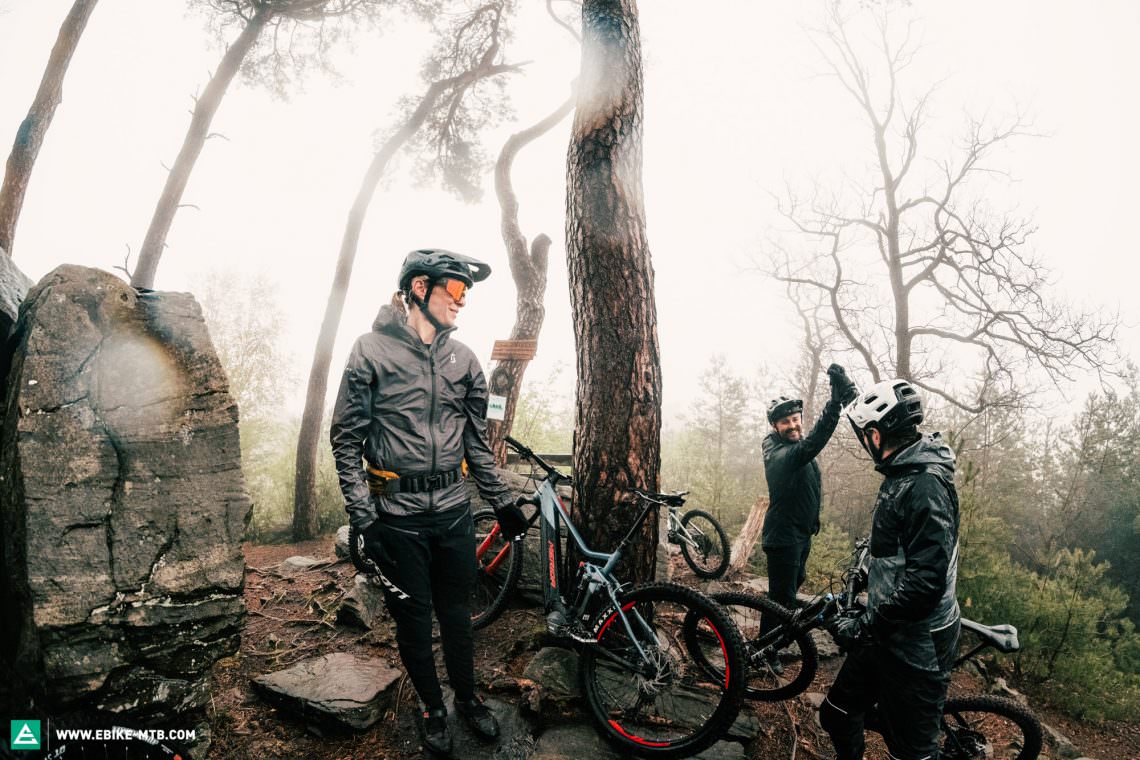
While not always painless, change is inevitable. As much as you can try to defend yourself and ignore the developments, it’ll end up becoming a painful lesson. Why not approach it positively, pluck yourself out of your comfort zone each time, keep learning and keep developing. Considering how much is going on, it’s more important than ever to face today’s explosive topics and have a go at answering the core questions in this article yourself in order to think independently and actively about how to shape a better future.
A willingness to grow and develop is one of the most important qualities to possess in order to position yourself and be prepared. Beyond quantitative data like revenue, sales or membership numbers, we’re looking at the qualitative aspects, which affect mindset and self-image. As the bike industry and community, we need to be aware that we’re no longer tucked in a niche for tinkerers and adrenaline junkies. Whether we like it or not, we’re at a stage where there’s a new level of responsibility that demands engagement, cooperation and lobbying in the political landscape. When it comes to questions of sport, leisure and urban mobility, the bike industry has the clout to be a major protagonist and its role will only become more significant in the coming years. Sound big? Don’t worry. Whether pope, president, millionaire or queen, we were all clueless, little kids at some stage. Those who approach new things with a healthy portion of self-confidence will prosper, while the rest, the ones hindered by fear or a lack of confidence, will be stuck, immovable, unable to act upon the potential that they could have. Show some courage – trust yourself to grow into these new tasks and to master them.
Conclusion
Big changes are inbound for our community and the bike industry. Luckily, we can learn from mistakes made by other sectors and be inspired by their virtues. What’s key will be persevering with communication, securing a voice for consumers in lobbying groups and that the industry creates solutions for real-world needs with its products. We know that those who spot opportunities rather than problems amongst the challenges will be on the right track. Don’t worry, it’s going to work out really, damn well.

Did you enjoy this article? If so, we would be stoked if you decide to support us with a monthly contribution. By becoming a supporter of E-MOUNTAINBIKE, you will help secure a sustainable future for high-quality cycling journalism. Click here to learn more.
Words: Robin Schmitt Photos: E-MOUNTAINBIKE team
















